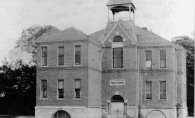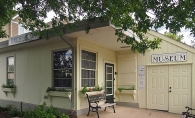Loungers around the lake in the summer can’t help but notice the flashy yellow antique steamship with a triangular red flag proclaiming “Minnehaha” as its smokestack puffs away into the blue sky. The boat’s recent history begins with the tale of diver Jerry Provost discovering this sunken vessel in 60 feet of water after the boat had been scuttled in 1926. Then Bill Niccum raised the Minnehaha to the surface after groups of divers attached eight airbags that could lift 2,000 pounds each. A decade later, the Minnesota Transportation Museum began a complete restoration of the ship to sail another day.
But who originally built this boat? Lori Cherland-McCune made this discovery when her recently deceased mother passed on the family scrapbooks and photo albums with many old snapshots of the Moore Boat Works in Wayzata, which her great-grandfather founded. Fascinated by this history, she’s researched her family’s past and its links to the early days of the lake. Cherland-McCune has now published Royal C. Moore: The Man Who Built the Streetcar Boats, with numerous photos of Lake Minnetonka’s bygone days.

Royal C. Moore hailed from Lake Champlain in upstate New York and moved to Minnesota at 19 years old. He had built rowboats since he was 14, and found work with Dingle Boat Works in St. Paul, soon plying his craft along White Bear Lake. Lake Minnetonka soon lured Moore to its waters, where he and Gustavus Johnson opened their own boat works on Wayzata’s north shore in 1879.
With three large buildings to construct boats, Moore’s business was booming until the wooden structures caught fire in 1902. All three buildings were destroyed. The Wayzata Fire Department couldn’t save the boat works, but Moore’s employees somehow managed to salvage all the finished wooden vessels inside, including 20 rowboats and 10 sailboats.
Moore planned on rebuilding his workshops immediately in Wayzata, but Excelsior tried to lure him to the south side of the lake. Moore’s business could mean jobs for nearly 100 men during the peak summer season. The village of Excelsior platted a stretch of land along the western edge of Gideon’s Bay for the new boat works. In the end, Moore opted to stay in Wayzata and built essentially the same plan he had for Excelsior. In spite of losing nearly all of the building materials, blueprints and tools, Moore produced new boats within weeks of the blaze.
One era was ending on Lake Minnetonka—that of the railroad boom bringing wealthy, often Southern, guests to grand tourist hotels with large verandas overlooking the lake. Trolley cars were the new rage that linked Lake Minnetonka to the Twin Cities, with lines extending all the way to Stillwater. Thomas Lowry, the “streetcar man,” brought the masses to Minnetonka aboard Twin Cities Rapid Transit (TCRT), but once there, these new visitors needed a speedy way to cross the lake.
Lowry looked to some of the established boat manufacturers for a slick new design rather than the cumbersome steamboats weighed down with hundreds of visitors. Lowry dreamed of efficient transportation on a regular schedule rather than just serving the tourist industry, so he sent his vice president to scout out other such boats out east in 1905. He gathered ideas from the speedy ferryboats on New York’s Hudson River as a base for the design of eight to 10 new “express boats” for Lake Minnetonka.
R.C. Moore was tapped to design and build these new “streetcar boats.” Workers sawed the ribs in Wayzata and shipped them to the much larger streetcar shop of the TCRT at 31st Street and Nicollet Avenue in Minneapolis, where they were used to build the ships. These 70-foot boats could fit 135 commuters in their sheltered lower decks and on the upper decks with 13 benches for a wide but windy view; TCRT eventually mounted a canopy on top to protect the passengers. The steam engine would propel them around the lake thanks to the combustion power of more than six tons of coal a week.
As the streetcar boats neared completion in 1906, Moore realized he must have docking stations for these “yellow jackets,” as the streetcar boats were affectionately known. TCRT built a second dock at Wayzata that extended 60 feet into the lake to safely board passengers. TCRT launched just six streetcar boats in 1906 with names that evoke the area: Como, White Bear, Hopkins, Harriet, Stillwater and Minnehaha. For just 10 cents, visitors could hop on board one of these boats to travel over the waves, and for a total of 25 cents the fare would include streetcar travel to anywhere along the lines.

In her book, Cherland-McCune says, “a seventh nearly identical TCRT streetcar boat was built with the express boats’ designer and builder [Moore] conspicuously absent.” None of the original plans for Moore’s famous streetcar boats survives—which would have come in handy when the Minnesota Transportation Museum restored one—perhaps due to a spat between Moore Boat Works and TCRT that went clear up to the Minnesota Supreme Court.
Fortunately, we can still see Moore’s handiwork and even hop aboard the canary yellow Minnehaha for a trip back to Lake Minnetonka’s glory days.









